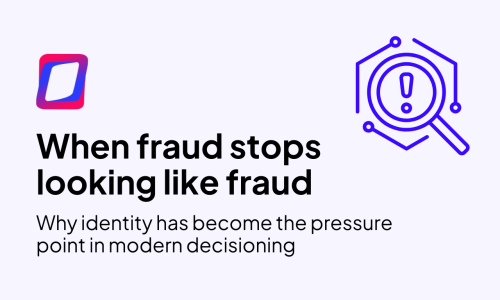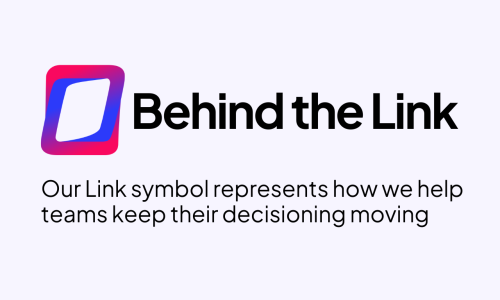Understanding Income and Employment Fraud in Auto Lending
Income and employment fraud in auto lending involves intentionally misrepresenting a borrower’s financial situation to secure loan approval. This type of fraud can take various forms, including falsifying paystubs, inflating income figures, or even creating fictitious employers.
The prevalence of this fraud type is significant due to its relative ease of execution and the substantial impact it can have on lenders’ portfolios. According to Point Predictive’ s 2024 Auto Lending Fraud Trends Report, income and employment fraud is the most pervasive issue, accounting for a substantial portion of the industry’s $7.9 billion fraud loss exposure. Let’s take a deeper dive into these findings.
The Staggering Impact
In 2023, income and employment fraud accounted for a massive $3.6 billion in losses for auto lenders, representing a hefty 45% of the total fraud-related losses in the industry. This means nearly half of all fraud losses in auto lending were due to applicants falsifying their income or employment details. Such a significant figure highlights the sheer scale and pervasiveness of the problem.
The implications of these losses are far-reaching. For lenders, this level of fraud translates to substantial financial damage, impacting their bottom line and reducing profitability. It also means higher operational costs, as lenders must invest more in fraud detection and prevention measures. Additionally, fraudulent loans are more likely to default, increasing charge-offs and financial strain on lending institutions.
The scale of income and employment fraud affects lenders’ financial health and erodes trust in the lending process. Lenders must implement robust fraud prevention measures to mitigate these risks, ensuring they can accurately verify applicants’ financial information. This is crucial to protecting their portfolios from fraudulent activities and maintaining the integrity of the auto lending industry.
An Alarming Rise in Fraudulent Applications
In the past year, there has been a concerning 6% increase in the number of fraudulent applications submitted by borrowers. This uptick is not just a statistic; it reflects the growing desperation and cunning of individuals facing economic hardships. With rising living costs and financial instability, more borrowers are tempted to misrepresent their income or employment status to secure auto loans they might not otherwise qualify for.
This trend is particularly alarming for lenders. As the economic environment becomes more challenging, the pressure on borrowers to secure financing by any means necessary intensifies. Consequently, lenders are seeing many applications, including exaggerated incomes, fabricated paystubs, and even fictitious employers. The challenge lies in the volume of these fraudulent applications and the increasing sophistication with which they are crafted.
For lenders, this surge in fraudulent applications means more resources must be allocated to detect and prevent fraud. It requires enhanced verification processes, more advanced data analytics, and a proactive approach to risk management. The rise in fraud threatens the financial stability of lending institutions and undermines the trust and efficiency of the auto lending market as a whole.
Addressing this issue is crucial. Lenders must stay vigilant and adopt robust fraud detection tools to mitigate the risk posed by these deceitful applications. The rise in fraudulent activity is a clear signal that the problem is escalating, and without significant intervention, it will continue to grow, placing even greater strain on the auto lending industry.
The Difficulty of Detection
Detecting income and employment fraud is no easy task for lenders. The complexity and sophistication of fraudulent applications make this a significant challenge. Many of these fraudulent submissions include fake paystubs and fictitious employers, designed to deceive standard verification processes.
Point Predictive’ s analysis reveals a startling statistic: about 1 in 5 paystubs submitted in auto loan applications are forged. This widespread use of counterfeit documents adds a layer of difficulty for lenders needing to assess an applicant’s financial situation accurately. Forgeries can range from simple alterations of genuine documents to entirely fabricated records created using sophisticated software.
The challenge doesn’t end with fake pay stubs. Many applicants go as far as creating fictitious employers, complete with fake websites and phone numbers, to support their claims. These elaborate deceptions are designed to withstand basic verification checks, making it even harder for lenders to spot the fraud. This means that traditional methods of verifying employment and income, such as contacting employers directly or reviewing paystub details, often need to be revised.
The widespread nature of these fraudulent practices necessitates more advanced detection methods. Lenders must employ cutting-edge technologies and data analytics to sift through applications and identify inconsistencies or red flags. Automated systems that cross-check applicant information against extensive databases of known fraud patterns and fake employers are essential in this fight.
Moreover, the human element cannot be overlooked. Training loan officers and fraud analysts to recognize subtle signs of forgery and fabrication is crucial. This includes being aware of common tactics fraudsters use, such as unusual formatting on paystubs or discrepancies in employment histories.
The difficulty of detecting income and employment fraud lies in the fraudsters’ ability to stay one step ahead. Lenders must continually evolve their detection strategies as they become more adept at creating convincing forgeries. This ongoing battle underscores the need for a multifaceted approach, combining advanced technology with skilled human oversight to protect against financial deception.
The Urgent Need for Advanced Detection Tools
These statistics paint a clear picture: income and employment fraud in auto lending is a serious issue that demands attention. Lenders must adopt more sophisticated fraud detection tools to stay ahead of the curve. By implementing advanced solutions like IncomePass, lenders can enhance their ability to identify and prevent fraudulent activities, safeguarding their operations and financial health.
Understanding the scope and impact of income and employment fraud is crucial for lenders striving to protect their businesses in an increasingly risky environment. Proactive measures and cutting-edge tools are essential to combat this growing threat effectively.
Preventive Measures and Solutions: How IncomePass and GDS Link Can Help
IncomePass by Point Predictive, in collaboration with GDS Link, offers a cutting-edge solution to detect and prevent income and employment fraud. Here’s how it works:
Automated Verification
IncomePass automates up to 80% of credit-approved applications, significantly reducing lenders’ manual workload. This automation, powered by an extensive data repository with over 23 billion risk attributes, is seamlessly integrated with GDS Link’s advanced lending platform to provide a streamlined and efficient verification process.
Data-Driven Accuracy
Leveraging Point Predictive’ s exclusive data repository, IncomePass aggregates consumer data and third-party sources to provide precise income and employment verification. GDS Link enhances this process by incorporating its robust analytics and decisioning tools, ensuring that the reported income is realistic and accurate.
Cross-checking with Known Fraud Indicators
IncomePass cross-checks employer information against a database of over 10,500 fake employers, ensuring the authenticity of the employment details provided by applicants. GDS Link’s integration with IncomePass allows for real-time detection and elimination of fraudulent employers, adding an extra layer of security to the verification process.
Real-Time Updates
With approximately 2 million new records added to the monthly data repository, IncomePass ensures real-time income and employment data accuracy. GDS Link’s platform continuously updates and synchronizes with IncomePass, keeping lender insights current and reliable.
Revving Up Fraud Prevention: Taking the Next Steps
Income and employment fraud pose a significant threat to the auto lending industry, with billions of dollars at risk annually. By leveraging advanced solutions like IncomePass, lenders can enhance their fraud detection capabilities, streamline the verification process, and protect their portfolios from fraudulent activities. As fraudsters evolve tactics, staying ahead with proactive risk management strategies is more critical than ever.
To learn more about how Point Predictive’ s IncomePass and GDS Link can help safeguard your lending operations, connect with GDS Link today and explore the opportunities to strengthen your fraud prevention measures.
Related Blog Items:
Recent articles

When Fraud Stops Looking Like Fraud
Read article
Behind the Link
Read article





